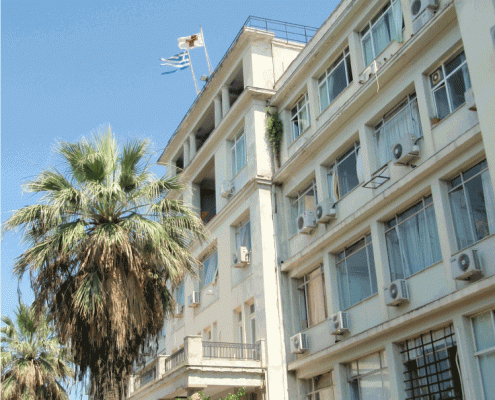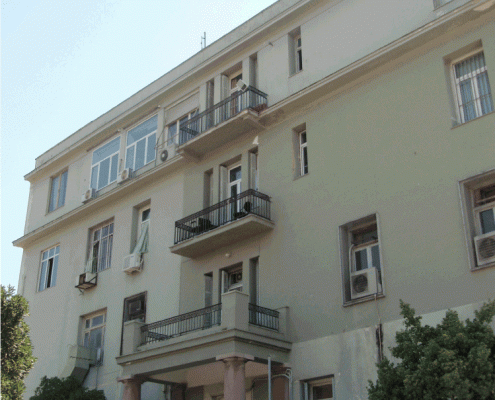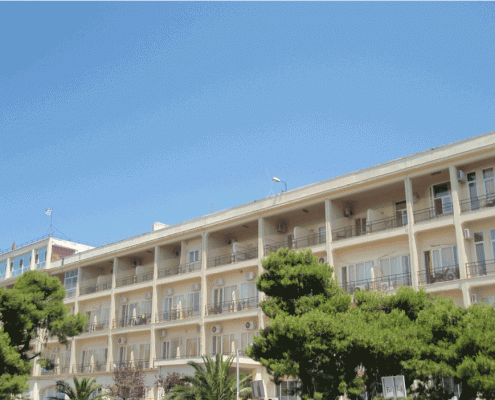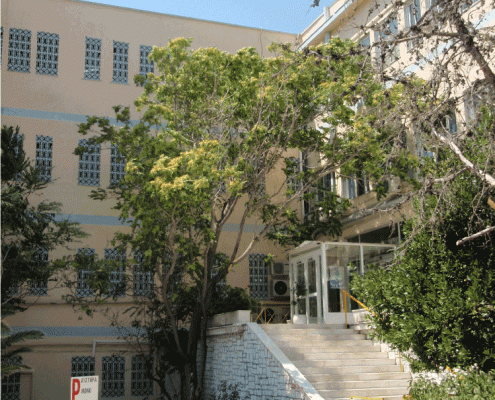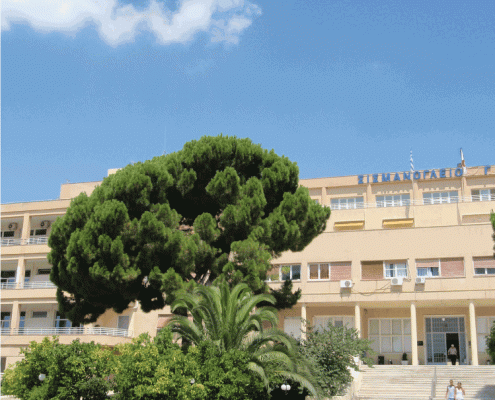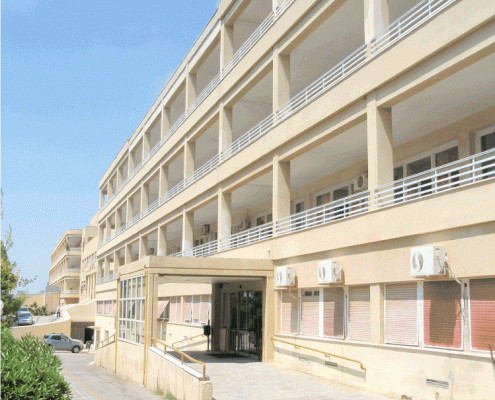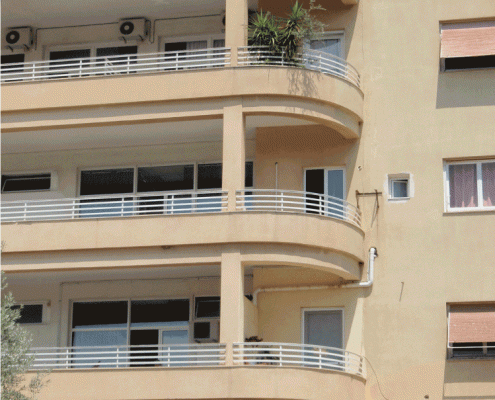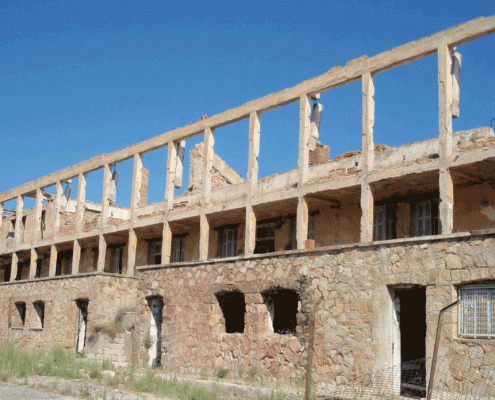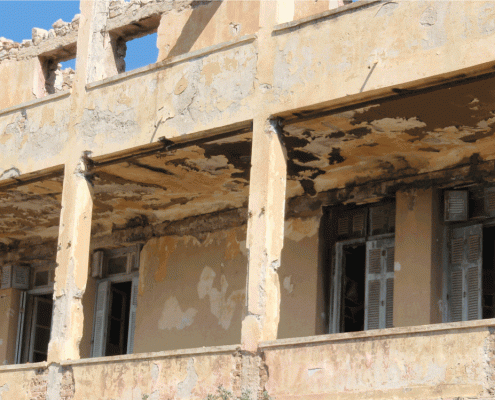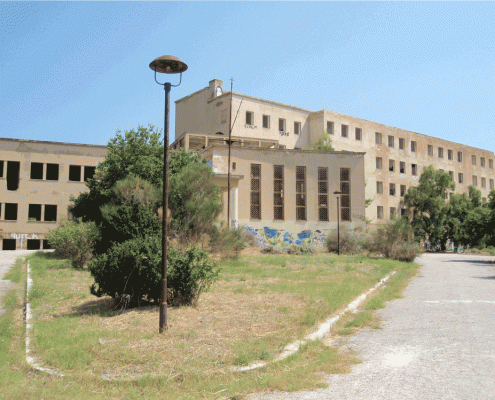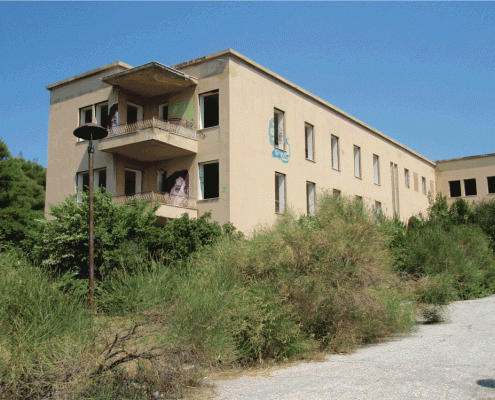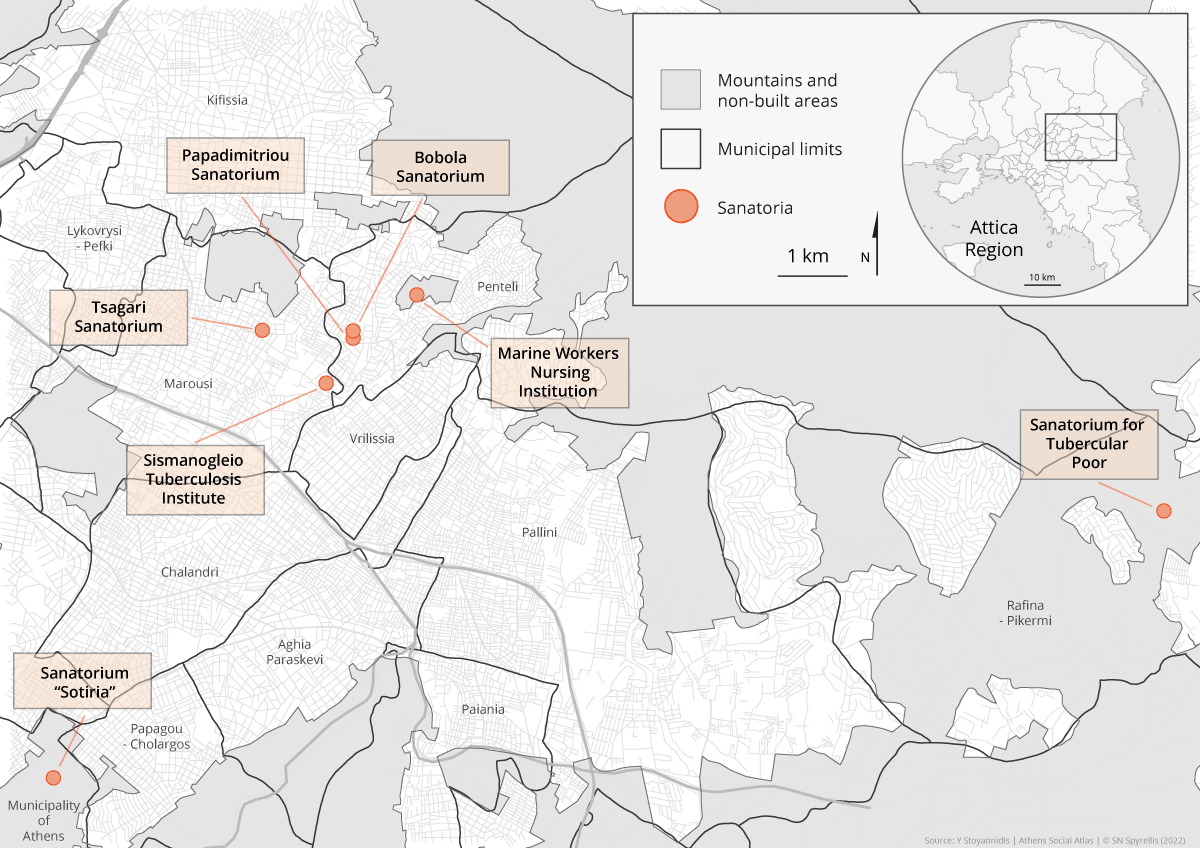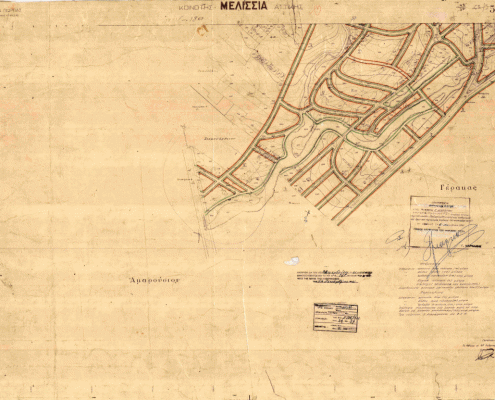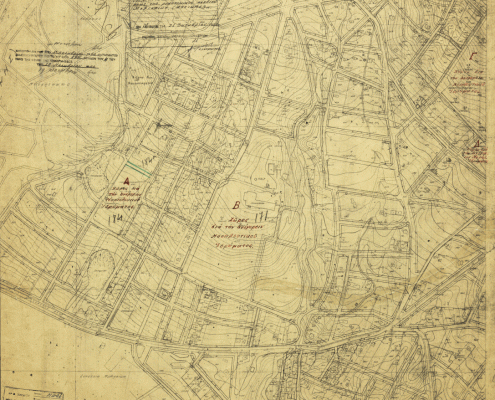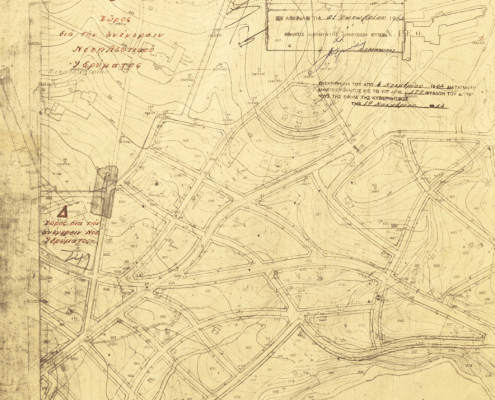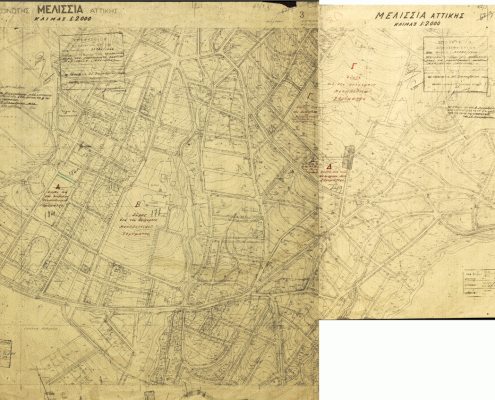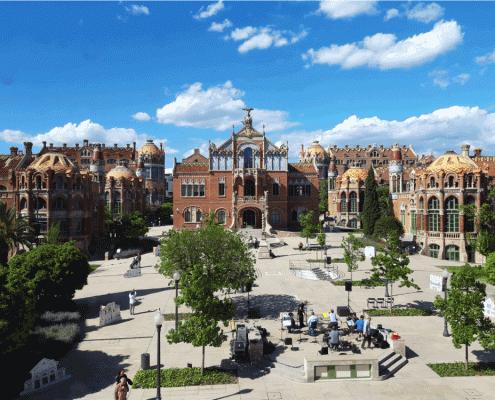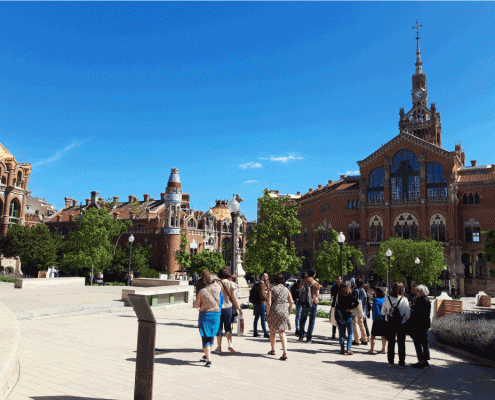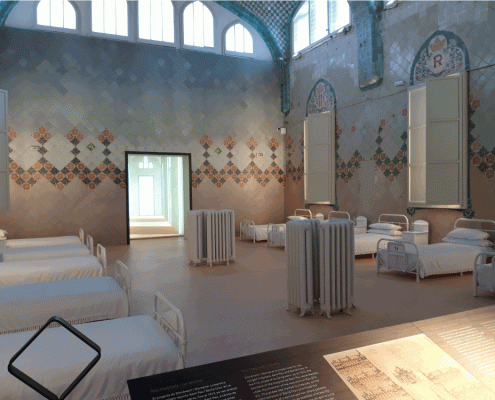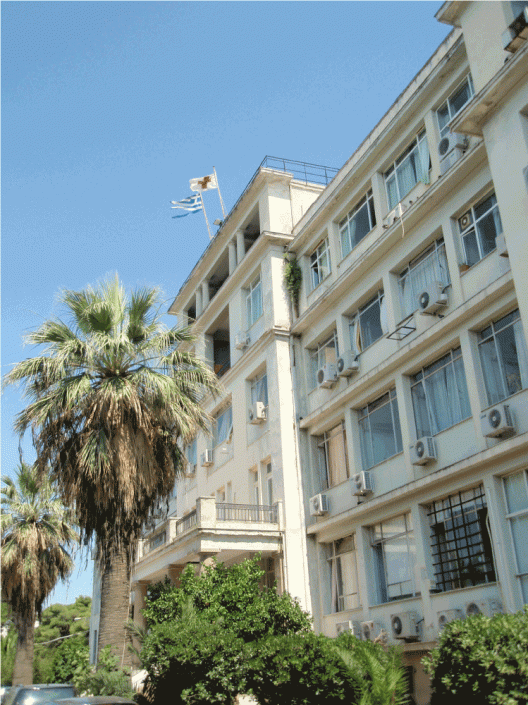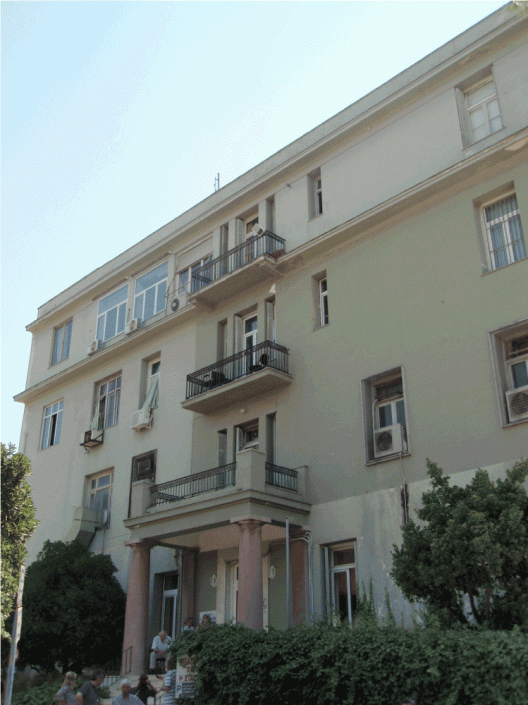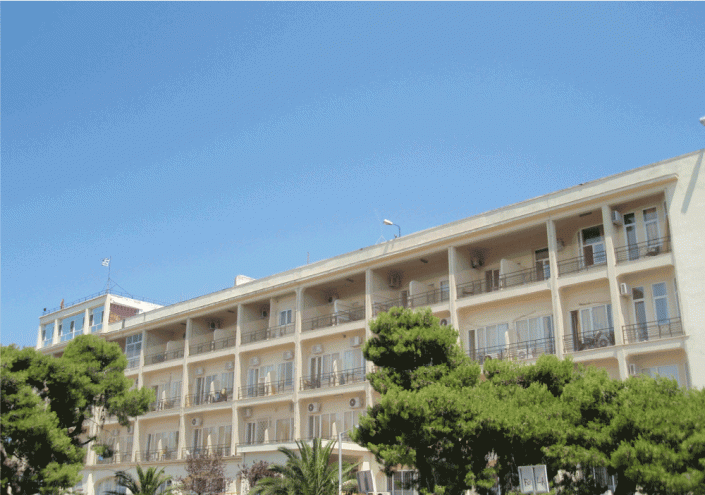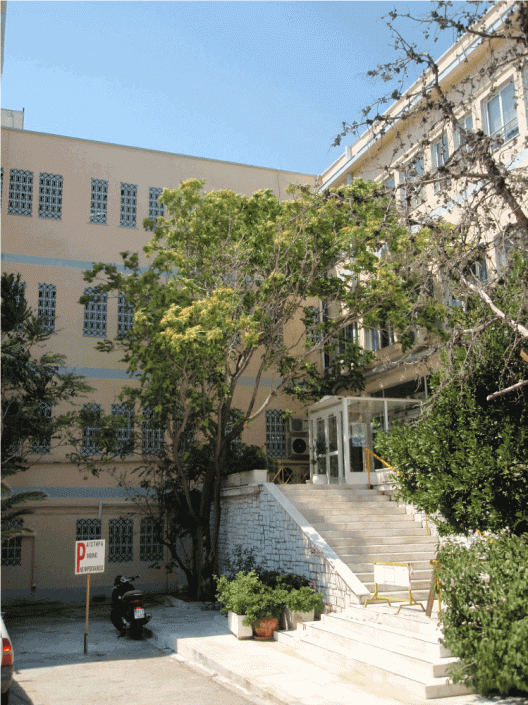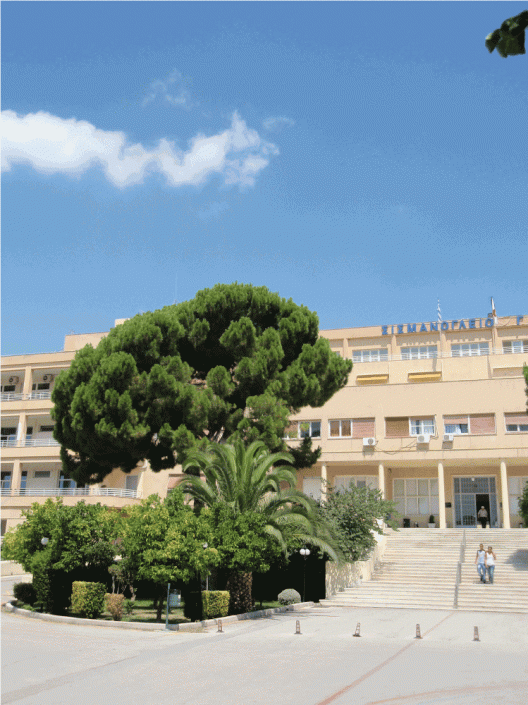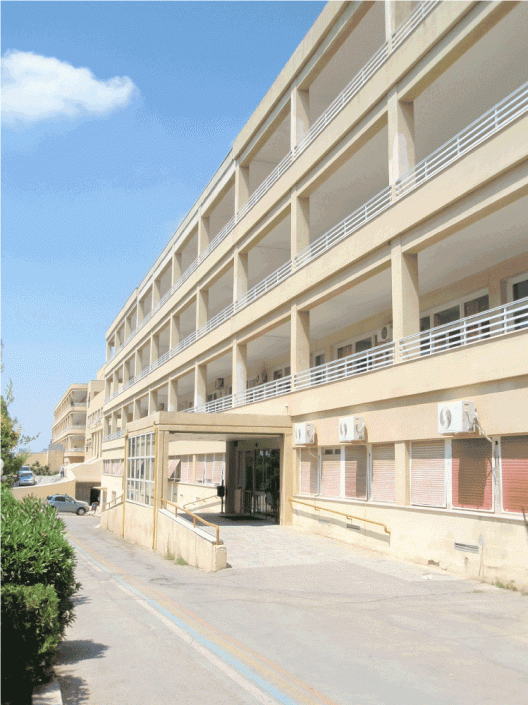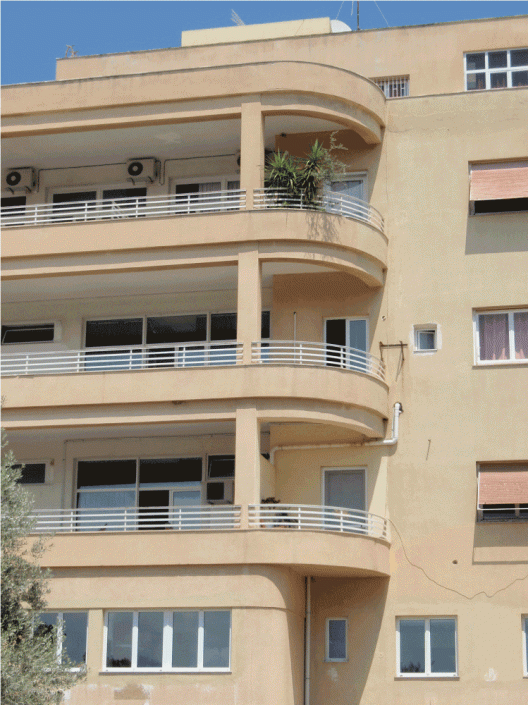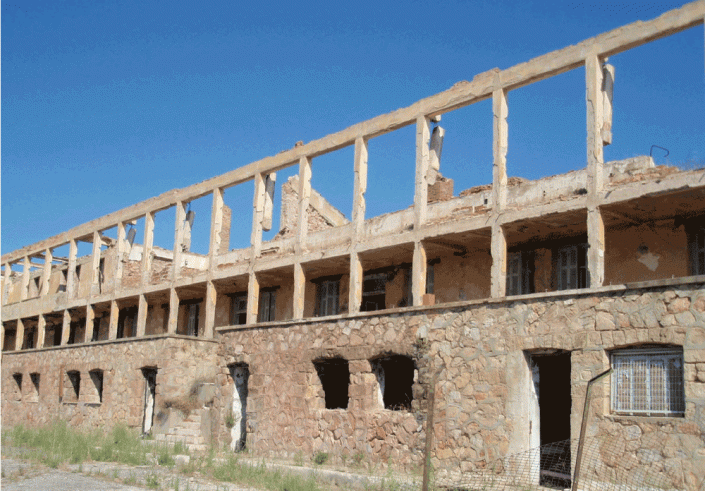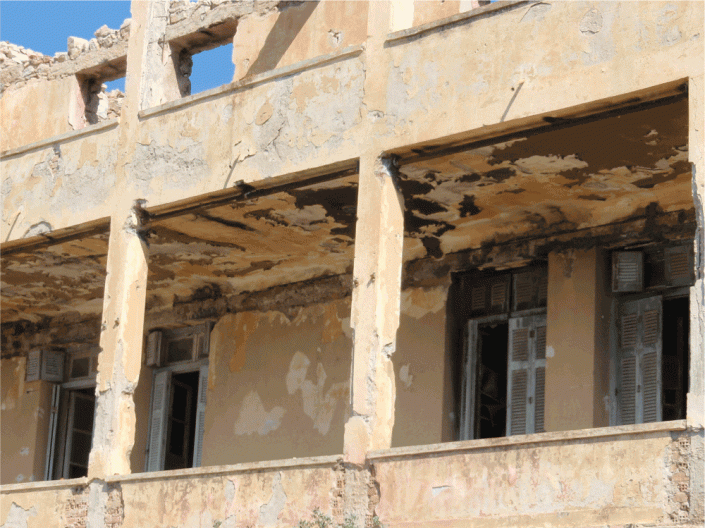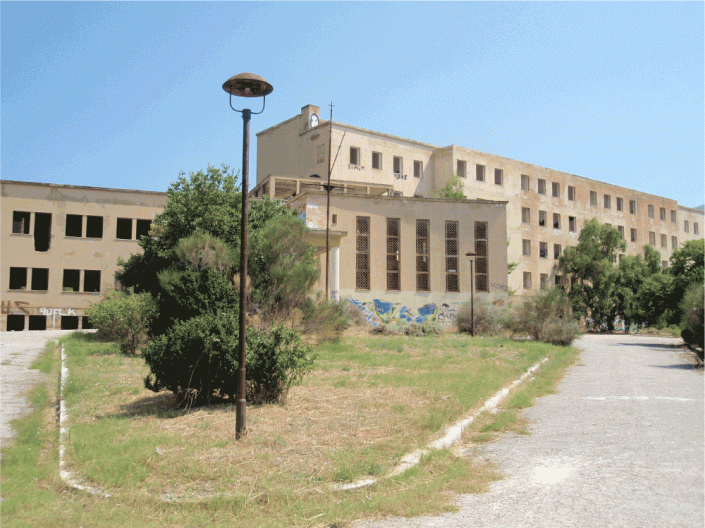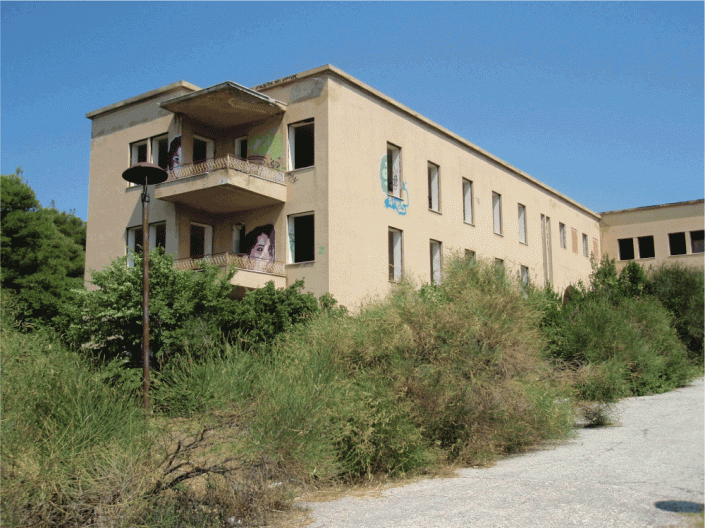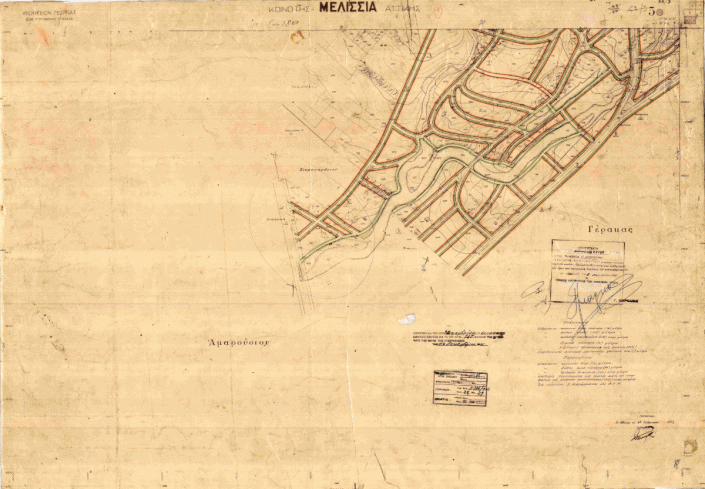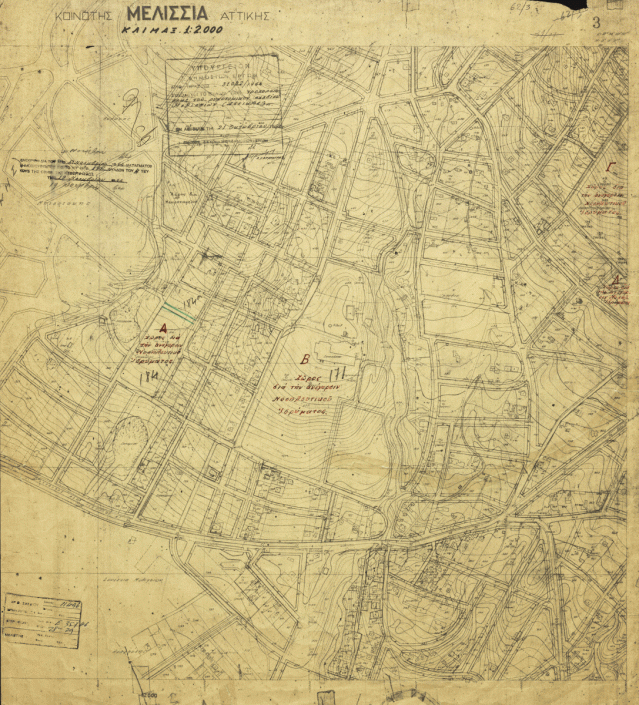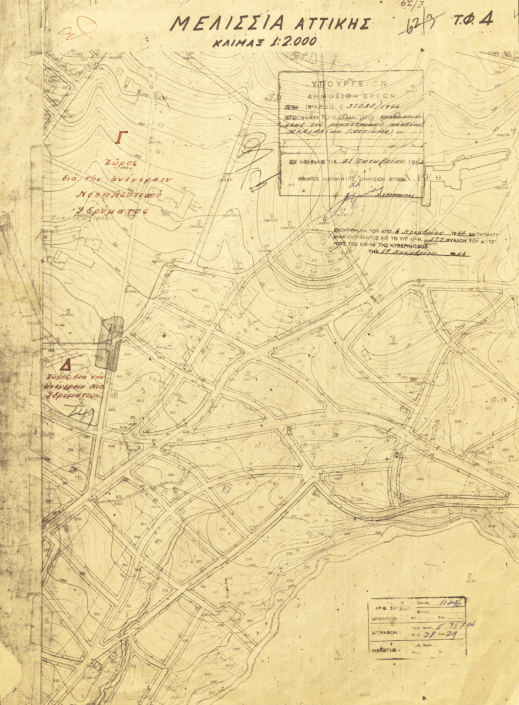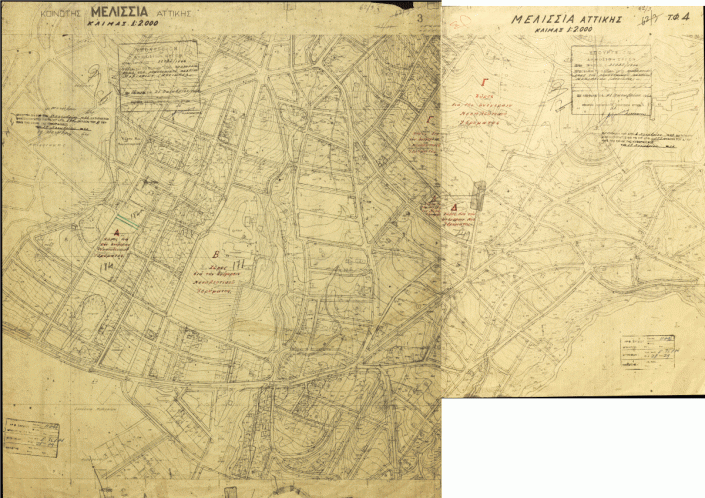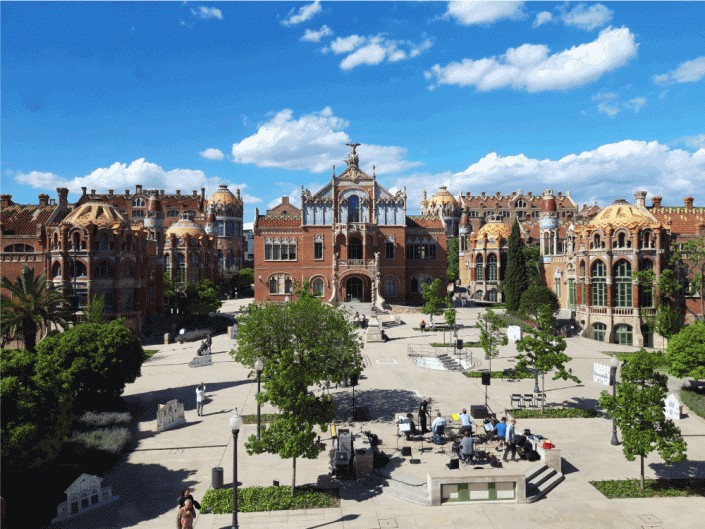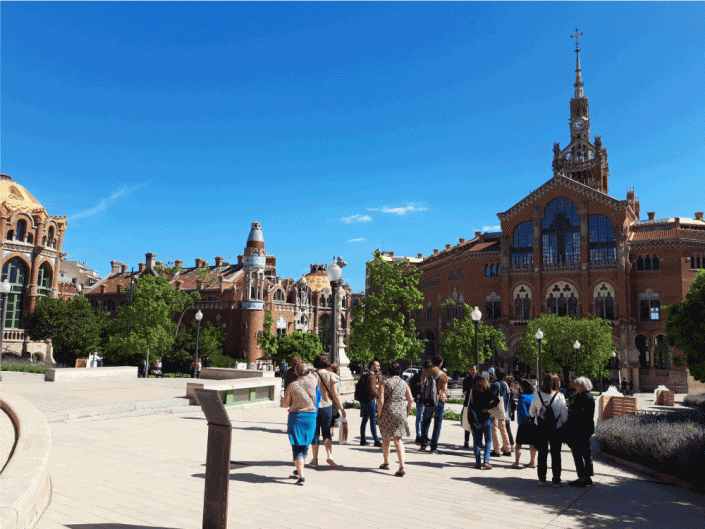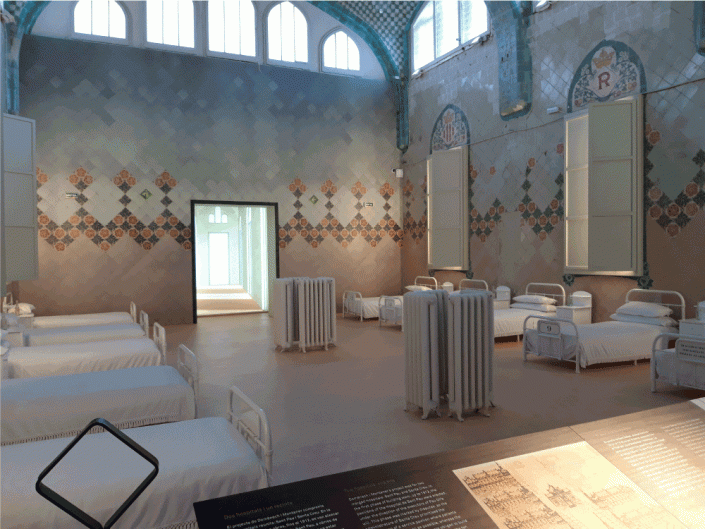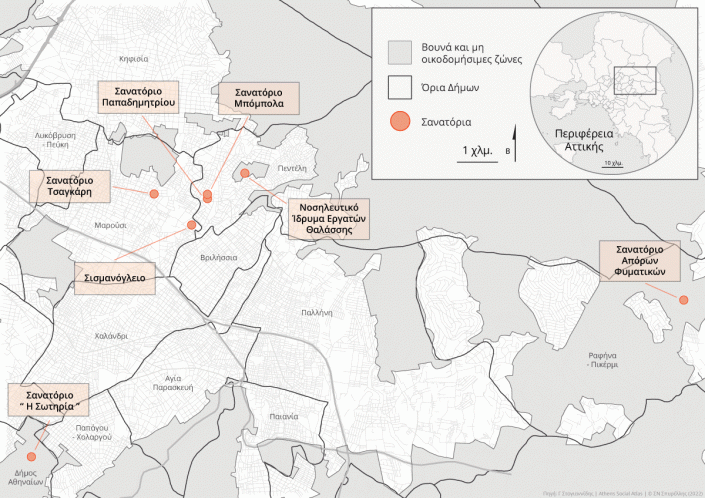Dragging the 'lost' city of tuberculosis through the archives. The sanatoria of Penteli or what can we get out of the history of hospitals.
Stoyannidis Yannis
Health, History
2022 | Sep
The text presents a less known aspect of the past of the city of Athens. In essence, this is an attempt to highlight a new category of historic site: a landscape for health purposes. To explain the specificity and historical features that advocate in favor of these sites, I will briefly refer to the history of the establishment of sanatoria on the outskirts of Penteli Mt. and the theory of medical climatology that suggested specific places as more or less suitable for the cure of tuberculosis.
From the end of the 19th c. until the interwar period, well-to-do tuberculosis sufferers were vacationing in the countryside of Maroussi in an effort to take benefit of the natural environment. Later, this practice attracted the interest of individual doctors, benefactors and investment schemes. All aimed to create large hospital infrastructure on the green mountain of Penteli. Many of these sanatoria were converted into general state hospitals in the post-war years, completely stripped of their historical identity. Today, few residents of Maroussi and Melissia still remember these stories. The aim of the entry is to discuss a new case of memory in the urban space, the process of oblivion for historical buildings and to discuss some proposals for its restoration. Moreover, another goal is to bring forth some ideas of preserving institutional memory through the examples of a hospital complex in Barcelona and the restoration of a sanatorium in Belgium.
Unearthing the historical paths of these large complexes can radically change the relationship of the Athenians and the inhabitants of Penteli with the forest environment, which is hastily characterized as non-historical. The text illuminates the past of an urban area, which is described as a modern and ahistorical suburb. Finally, the aim of this text is to show how the study of archival evidence can reveal forgotten places and stories that escape the view of historians, such as those of patient care
The therapeutic sites
The reception of industrial facilities as part of the architectural and historical heritage of modern societies was the result of scientific processes and discussions, which were incorporated by post-war industrial archeology. It is an interdisciplinary field of listing, studying and preserving the remnants of the productive activities of old and contemporary societies. The need for research and understanding of small and large economic processes led to the demand for the preservation of material remains and later of intangible imprints in memory. This broadening of questions beyond the narrow confines of technical development was reflected in Jacques Pinard’s definition in 1985: “Industrial archeology therefore seeks to create more than a history of science and technology, wanting to reconstruct, starting from specific elements, all that material and human space that surrounds a society.” (Pinard, 1991:11). This new research field was the occasion for the emergence in Greece at the end of the 1980s of the trend of maintaining several industrial facilities and highlighting them through different restoration programs.
This text will not deal with industrial heritage. Through this example I seek answers to the question why public health and public health facilities are escaping the category of monuments of modern architectural heritage. Although architects refer to them and study their creators, the uninterrupted operation within the same shells leads to rather unintentional silencing of their past and ultimately to collective oblivion. Few citizens can refer to events or persons associated with Greek hospitals and healthcare structures. Referring to industrial archeology, I wanted to recall that in other cases the persistent questions of the scientific community have contributed to the inclusion of a category of non-traditional or non-heritage constructions in the sphere of modern historical monuments. The few studies on the historical routes of Greek hospitals, the absence of structured archives with administrative, financial, and operational information have led to a long oblivion in recent years. In other words, in many cases we ignore the special conditions, the state public health programs, the social needs through which these healthcare organizations were born.
Through the study of such a historical example, I will try to highlight a special case not just of historical hospital institutions but more of a greater forgotten health landscape. In my doctoral dissertation I used the term ‘therapeutic sites’ to explain 19th c. medical theory according to which the climate of various settlements around the globe was characterized as a cure for certain ailments. At the beginning of the 19th c. doctors in the British Isles sought treatment for a widespread disease among the upper classes. Tuberculosis had plagued young students, artists, and writers. Since affluent citizens could pay for medical visits and treatment, doctors sought therapies tailored to the financial means of these social classes. Early ideas included sending young TB patients to the mild Mediterranean (central Italy, southern France, Ionian Islands). They recorded their thoughts and conclusions in treatises, in which they described the natural environment (flora, fauna, climate) of these areas (Clark, 1820; Clark, 1829; Fisk, 1907; Johnson, 1890; Matthews, 1835; Weber & Weber, 1907).
They soon noticed that the combination of a rich diet with the climatic conditions of southern Europe led to a temporary recovery of patients’ health. As doctors gathered more encouraging data on the Mediterranean climate, they came up with a scientific theory, which became known as medical climatology. In other words, they claimed that special climatic conditions could fight the disease of tuberculosis and prolong the life of the carriers. The theory had spread to such an extent that some doctors claimed that the climatic conditions of the Mediterranean could be artificially transferred in different geographical parts of the world. Thus, they suggested ways to reduce the internal humidity and increase the brightness of the buildings, in which they would treat invalids with tuberculosis. One of the most famous advocates of these ideas was James Clark, the later Royal Doctor of Victoria, England (Clark, 1829). Clark realized that proposals to relocate affluent TBs to the Mediterranean were making the domestic economy bleed. After several recordings of the climatic conditions in upper-class English resorts, Clark created a list of the specific characteristics of each area that made it suitable for the treatment of tuberculosis and those suffering from respiratory diseases (Στογιαννίδης, 2016:44-46).
In fact, it was at this point that the idea of a sanatorium as a place for tuberculars was born. Like all ideas, it took several decades and some pioneering doctors to appear in the Alps between 1850-1860 as a new category of care institution (Στογιαννίδης, 2016: 51-53). Until the end of the 19th c . sanatoria had been established in central Europe as a type of specialized hospital and isolation area for the germs of TB (bacilli). The idea of building hospitals for the treatment of tuberculosis spread systematically throughout the continent and beyond its geographical boundaries after the laboratory discovery (1882) of the contagious behavior of tuberculosis by Robert Koch. The revelation of the contagiousness of germs led to the need to limit the number of carriers of TB. Following the ideas of doctors such as Clark, Greek doctors in the early twentieth century were looking for a place to build sanatoria.
Reviewing the treatment of tubercular patients in Athens
As early as the end of the last century, the tuberculous Athenians took refuge in the forests and countryside of Maroussi to alleviate the widespread disease of the cities (Στογιαννίδης, 2016: 367-368). It is certain that this was a practice that had already been spread, since short stories were published in the Press about tuberculars that were vacationing under the trees and next to the streams of Penteli.(Η φθισική, 1888). These publications, together with possible other data from the observation of the Attic climate, led the doctors and defenders of hygiene, Konstantinos Savvas and Vassilios Patrikios, to pay an on-site visit to Penteli in the spring of 1902. At the same time the Palace of the Duchess of Placentia had come into the possession of the Greek state. Thus, the two doctors and representatives of the Greek Association against Tuberculosis proposed that the Palace should be converted to a sanatorium (Σκριπ, 23.04.1902; Στογιαννίδης, 2016: 258-259). The issue of the conversion of the Megaron was discussed into the Parliament but without any outcome. Ideas for its reuse were submitted again in 1919, when Costas Kitsikis undertook the study of converting it into a hotel-hydrotherapy center (Φεσσά-Εμμανουήλ & Μαρμαράς, 2005).
The Commission did not reach a conclusion regarding the selection of Penteli and the reins were taken by Sofia Schliemann, who proceeded with the construction of a small building in the rural area of Ampelokipi. Although not often mentioned as such, Schliemann’s choice had a social stigma. The choice of Ampelokipi was linked to the need to build a sanatorium for the suffering folk. The paupers would be the priority of this institution. So, the Association’s committee was looking for an area that would be surrounded by a forest environment but would be relatively at the same time close to the city center. This type of city sanatorium had been successfully implemented in American cities and had solved the problem of needy or part-time tuberculosis patients, who wanted to be treated in a familiar environment and in a short distance from their home.
The route of the SOTIRIA Sanatorium was proportional to the social conditions created by the ten-year war (Balkans, Asia Minor). Tubercular refugees and soldiers gathered at its gates. The sponsorships of wealthy citizens (Abet, Economidis, Kyriazidis) allowed the sanatorium’s administration to build small clinics, in order to increase its capacity in beds. After the arrival of numerous Asia Minors in the port of Piraeus, SOTIRIA received more admission requests than it could respond, resulting in the rejection of several patients. The tuberculosis patients who were not admitted camped in the groves that surrounded the clinics (Στογιαννίδης, 2016: 286-332). The pressure exerted by the patients’ outdoor camps in unsuitable conditions caused new initiatives in the outskirts of the capital.
The construction of private sanatoria for the treatment of well off tuberculars had been an idea that had occupied Greek businessmen and politicians since the beginning of the twentieth century. In fact, many had tried to cooperate with doctors established in Central Europe in order to welcome a network of patients from these countries (Στογιαννίδης, 2016: 169-175). According to Marc Arnold, the preference for Mediterranean resorts had arisen as a result of the many months of travels of European artists and intellectuals in southern Europe (Arnold, 2012: 16-18). Most of the submitted sanatoria projects were rather incomplete or quite grandiose for the immature Greek economy. It seems that the public health sector had not yet blossomed enough to support large private care organizations. In some cases, local communities had denied these plans for fear of the infectious TB germs.
Although private activity in the health sector is associated with profit, the impasse of the first ventures for private sanatoria confirms that the surrounding social conditions influence these initiatives however innovative they are. A few decades later, the administrative and financial collapse of SOTIRIA made it imperative to establish other organizations that would undertake the care of tubercular citizens. The existing sanatoria in Chania (Mt. Pilion), Thessaloniki and the small sanatorium on Mt. Parnitha were unable to respond to the hundreds of requests. Dozens of tubercular patients chose to camp on the outskirts of Penteli and in Lykovrysi (Magoufana), looking for the rehabilitating sun and fresh air. The increased presence of these patients in the forest countryside, the demands of the Maroussians for their removal and the constant interest of the doctors to work in large hospitals, which would apply the European standards, encouraged a wave of sanatoria building. Although the mountain of Penteli was not chosen at the beginning of the century, in the 1930s it seemed the ideal solution for the establishment of the Greek Davos.
The sanatoria built in Penteli were quite close to the model of the private Central European institutions. These were large hospitals, which adopted the interwar architectural trends and aimed from the first day of their operation to serve the large number of tubercular patients living in Greece and who were not admitted to state sanatoria. This extensive sanatorium construction project seems to have succeeded due to, in addition to the funds available, the multiple requests of TB patients.(Στογιαννίδης, 2017: 36-38; Στογιαννίδης, 2016: 221-253).
The new sanatoria of Mt. Penteli significantly created an architectural trend in the broader area by adding large establishments. In the late 1930s these sanatoria turned the mountain slopes into a natural park with healing properties. Among the pines, impressive complexes emerged that inspired confidence and hope for the interwar treatment program. The sanatoria of Dr. Papadimitriou and Dr. Tsagari belong to the category of large sanatoria (Photo 1 & 2, Map 1). In fact, the Tsagaris Sanatorium is a case of a large investment venture, since Greek businessmen, industrialists, politicians and doctors contributed to its construction (Photo 3 & 4, Map 1).
Photos 1-4: The Papadimitiou and the Tsagari sanatoria
Private hospitals did not all aim to increase their initial capital. The Sismanogleio Tuberculosis Institute was part of the ideological scheme, which considered beneficial politics synonymous with urban culture (Photos 5-7). The Sanatorium for Tubercular Poor (later Sanatorium for TB Civil Servants) followed the model of SOTIRIA, as it was built by a group of philanthropic bourgeois who wanted to help those TB sufferers who were struggling to survive (Photos 8 & 9). The Marine Workers Nursing Institution was a private initiative led by a financially vigorous labour union (Photos 10 & 11). The large sanatorium of the House of Sailors is a presumption of the social demands and protests of the interwar labour unions and finds similarities with the internationally known sanatorium of the Dutch diamond miners (Zonnestraal).
Photos 5-11: The Sismanogleio Tuberculosis Institute, the Sanatorium for Tubercular Poor and The Marine Workers Nursing
Map 1: localisation of sanatoria in the Attica region
The abandonment of the establishments of old sanatoriums and the need to reuse them: reference to European examples of reuse
Within a decade the mountain of Penteli was transformed from a place of improvised tents for tuberculosis vacationers into a Greek ‘Magic Mountain’. The road to these modern hospitals was not easy. With the beginning of World War II, most of them were occupied by the Occupation forces and in the post-war decades they were acquired by the Greek National Health System at different times (Photos 12-15). After the last financial crisis (2008-2019), some of them have stopped or limited their operation. As abandoned shells, they are unable to document their past, the routes that led to their establishment and finally to communicate memories of these times to the current inhabitants of Penteli and Melissia. None of the old sanatoria bear any markings for the time of the great crisis of TB or for the reasons that led to their construction and abandonment.
My original introductory note to industrial archeology aimed at this common feature. As many historical industrial complexes remain abandoned in urban areas, these sanatoria are now hidden behind pine trees deprived of any memory and historical context. Alfrey and Putnam argue that the preservation of monuments only makes sense when it succeeds in recalling the historical context in which they were created and involving different groups of audiences through public history programs (Alfrey & Putnam, 1996: 179-183).
Photos 12-15: Plans for localisation of sanatoria in the 1960s
Examples of successful management of historical hospitals reveal several differences. The historic Sant Pau Hospital in Barcelona -another birthplace of architectural modernism- has been fully preserved and today functions as a museum of public health (Photos 16-18). The visitor is aware of all those technological innovations that the architects have adopted to improve the care conditions and the impressive aesthetic decorations, which were designed to alleviate the patients’ despair and to emphasize the robustness of the bourgeoisie. This complex of hospital buildings has a historical archive of its operation, which allowed a consistent architectural restoration and allows research and understanding of its past. It was restored from 2009 onwards, when the hospital was moved to new facilities (Conejo da Pena, Villatoro, Nebot, & Fugueras, 2014). Respectively, the impressive modern sanatorium Joseph Lemaire in Belgium after decades of abandonment was restored and gained new use as a nursing home for elder people.
Photos 16-18: The historic Sant Pau Hospital in Barcelona
Abandoned sanatoria are not just places where people used to care for sick bodies. These are historical places of social memory, since they were born through special social conditions, sometimes as a persistent request of workers’ associations and for several years they treated large numbers of Greek citizens. Their shells continue to document the architectural thought and vision of earlier eras. Their reuse will preserve this architectural thoughts and questions, while it can give new breath to the relationship of architecture with the natural environment. Not all large facilities can be converted into history museums. An alternative proposal, such as the transformation of the old sanatoria into an extended complex for elder care, could prove to be a promising solution and serve as an example of the exploitation of the historical heritage. Creating history or memory spaces within operating hospitals could be helpful for the mental state of patients and their relatives, especially if it highlighted the historical paths and social processes through which these organizations emerged.
Until recently, a means of protecting the modern monuments was their listing in the protected monuments group by the services mainly of the Ministry of Culture and of the former Ministry of Environment, Spatial Planning and Public Works. Today, the Greek society has become acquainted with the cultural value of these monuments through the many examples and educational programs, so that the designations could be replaced by comprehensive plans for the promotion and utilization of these complexes. If the reuse of industrial buildings is often hampered by the difficulties of arranging their interiors, these large technical complexes lack these technical limitations. Most buildings had adequate openings that allowed sunlight to enter the patients’ wards.
The preservation and reintegration of these buildings into the urban landscape might guarantee the recovery of a forgotten experience that is not only associated with a contagious disease but also with its treatment programs. Traces of the persons who preceded the reconstruction of the sanatoria and the years that operated can be found only in bank archivess, in medical and architectural journals and in the newspapers of the time. This is a story that escapes the great narratives and whose survival is ensured only by the preservation of material evidence (constructions, archives). The welfare state experiment was not an instantaneous conception but a product of social processes and long-term social contract. Preserving the memory in relation to the urban space is an obligation, which we cannot give up as active citizens. The special location and layout of the sanatoria create a new dialogue with the forest environment and is an additional reason for their reintegration into the memorial sites.
Entry citation
Stoyannidis, Y. (2022) Dragging the ‘lost’ city of tuberculosis through the archives. The sanatoria of Penteli or what can we get out of the history of hospitals, in Maloutas T., Spyrellis S. (eds) Athens Social Atlas. Digital compendium of texts and visual material. URL: https://www.athenssocialatlas.gr/en/article/the-sanatoria-of-penteli/ , DOI: 10.17902/20971.109
Atlas citation
Maloutas T., Spyrellis S. (eds) (2015) Athens Social Atlas. Digital compendium of texts and visual material. URL: https://www.athenssocialatlas.gr/en/ , DOI: 10.17902/20971.9
References
- Alfrey, J., & Putnam, T. (1996). Η Βιομηχανική Κληρονομιά. Διαχείριση πόρων και χρήσεις. Αθήνα: Πολιτιστικό Τεχνολογικό Ίδρυμα ΕΤΒΑ.
- Arnold, M. (2012). Disease, Class and Social change. Tuberculosis in Folkestone and Sandgate, 1880-1930. Newcastle upon Tyne: Cambridge Scholars Publishing.
- Clark, J. (1820). Medical Notes on Climate, Diseases, Hospitals and Medical Schools in France, Italy, and Switzerland. Λονδίνο: John Murray.
- Clark, J. (1829). The influence of climate in the prevention and cure of chronic diseases. Λονδίνο: John Murray.
- Conejo da Pena, A., Villatoro, V., Nebot, L. G., & Fugueras, L. (2014). The Sant Pau Modernista Precinct. Planeta S.A.
- Fisk, S. A. (1907). A search for a suitable climate. Transactions of American Clinical & Climatological Association (23), σσ. 40-52.
- Johnson, H. A. (1890). The modification of tuberculosis by climate. Transactions of American Climatological & Clinical Association (7), σσ. 262-270.
- Matthews, H. (1835). The diary of an invalid: Being the journal of a tour in pursuit of health, in Portugal, Italy Switzerland and France in the years 1817, 1818, 1819. Λονδίνο: John Murray.
- Pinard, J. (1991). Η βιομηχανική αρχαιολογία. Αθήνα: Πολιτιστικό Ίδρυμα Ομίλου Πειραιώς.
- Weber, S., & Weber, P. F. (1907). Climatotherapy & Balneotherapy. The climates and mineral water health resorts (spas) of Europe and North Africa. Λονδίνο.
- Η φθισική. (1888). Εφημερίς των Κυριών (246), 4-6.
- Στογιαννίδης, Γ. (2016). Το κοινωνικό ζήτημα της φυματίωσης και τα σανατόρια της Αθήνας, 1890-1940. Βόλος: Τμήμα Ιστορίας-Αρχαιολογίας-Κοινωνικής Ανθρωπολογίας, Πανεπιστήμιο Θεσσαλίας.
- Στογιαννίδης, Γ. (2017). ‘Απαγορεύεται το πτύειν’: Πολιτικές διαχείρισης της φυματίωσης στους χώρους εργασίας. Ο Κόσμος της Εργασίας (4), σσ. 28-45.
- Φεσσά-Εμμανουήλ, Ε., & Μαρμαράς, Ε. (2005). 12 Έλληνες αρχιτέκτονες του Μεσοπολέμου. Αθήνα: Πανεπιστημιακές Εκδόσεις Κρήτης.

